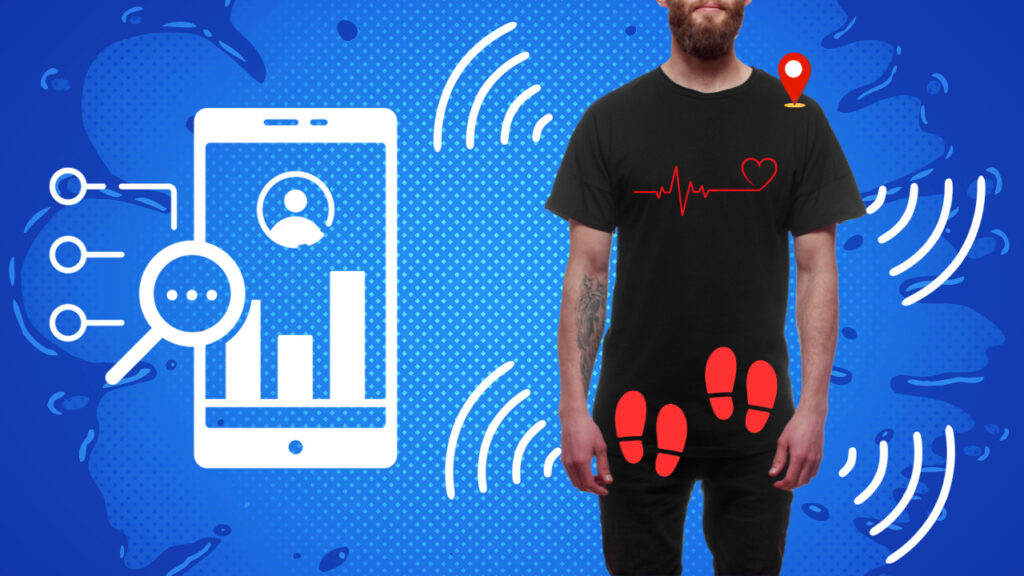“SMART ePANTS could revolutionize the Internet of Things by collecting data to help intelligence, medical and sports commmunities,” wrote the Armed Forces Communications and Electronics Association. Do you believe it?
The U.S. Intelligence Community recently launched an effort to make computerized clothing a reality — a move critics say could result in massive biometric surveillance of citizens and an increase in people’s exposure to radiofrequency radiation.
The Office of the Director of National Intelligence (ODNI) on Aug. 22 announced their future develop its computerized clothing program — Smart Electrically Powered and Networked Textile Systems, or SMART ePANTS — over the next three-and-a-half years.
This active smart textiles (ASTs) like SMART ePANTS’ designs rely on built-in actuators and sensors to detect, interpret, and react to environmental information. Per IARPA’s project description, such wearables could include “weavable conductive polymer ‘wires,’ energy harvesters powered by the body, ultra-low power printable computers on cloth, microphones that behave like threads, and ‘scrunchable’ batteries that can function after many deformations.”
What are smart textiles?
Smart textiles or e-textiles represent the convergence of textiles and technology. It involves incorporating conductive materials, sensors, and connectivity components into clothing to transform ordinary garments into intelligent, data-capturing devices. This technology enables various functions, such as monitoring heart rate during exercise or adjusting the temperature of your jacket with a smartphone app.
Smart garments can record your physical activity, heart rate, and sleep patterns, providing valuable information about your well-being. Imagine a wardrobe that adapts to your preferences, changing its color or fit based on your mood or the weather. Additionally, mainstream media tries to sell us on the idea that smart clothing is not just about functionality but also about style. Designers integrate technology into their creations, making them not only intelligent but also fashionable. And this fashion surveillance is happening right now.
Data collection on clothing is now happening through NFC-enabled garments:
NFC technology in clothing is used for various purposes, such as inventory tracking in retail stores, authentication of high-end fashion items, or interactive experiences for consumers.
Take this example: Nike is testing a new technology in its shoes called Radio Frequency Identification (RFID) tags. These small chips are embedded in the soles of the shoes, allowing the measurement of distance traveled or calorie consumption. The company claims that this enables a better understanding and service for its customers.
RFID tags allow tracking products in the supply chain. So, if there’s an issue with quality control or shipping errors, the specific item that needs to be recalled or repaired can be easily located. This makes it easier for companies like Nike, which send hundreds of thousands of products through their factories every day.
RFID enables customers to use a smartphone app that communicates directly with their sneakers to retrieve data, such as how many kilometers they’ve run or whether they need to replace their shoes entirely. For example, you could use a smartphone app that connects directly to your Nike Air Max shoes via Bluetooth when you start running in them, but after 500 kilometers, decides that you no longer want to wear them.
The SMART ePANTS government program is working on producing clothing with “integrated audio, video, and geolocation sensors that are as stretchable, flexible, washable, and comfortable as regular textiles.
Items to be produced include shirts, pants, socks, and underwear.
In a time when technology seamlessly integrates into our lives, smart clothing has proven to be one of the most fascinating innovations. These garments, equipped with state-of-the-art sensors and electronics, promise comfort, health monitoring, and even a fashionable aesthetic. However, beneath the smooth surface of smart clothing lies a disturbing problem – the risk of surveillance.
In their book “Privacy in the Age of Big Data: Recognizing Threats, Defending Your Rights, and Protecting Your Family,” Claypoole and Theresa Payton explain:
“When used by the government, technology opens up a new level of intrusion that raises serious constitutional concerns. Does the government need permission to track people anonymously using these fabrics? It should, but this decision will have to be made over time by the courts.”
In an article published in January on PubMed, the potential of electronic textiles is touted as a “new era of wearable technology for health and fitness solutions,” promoting their use in diverse products such as diapers, masks, and bedding, as well as for applications like “health condition monitoring, treatment of chronic diseases, rehabilitation, and improvement of health and social lifestyle.”
And this fashion surveillance is happening right now.
Nike is the first major shoe manufacturer to use RFID tags in its products, but that doesn’t mean it’s the last. The technology will continue to grow, collecting biometric data from you and your peers, from your location and movements to your physiological values. There are states where the consent of all parties involved is required. While the person opting to wear computer-controlled clothing has at least given some form of consent, everyone in their vicinity has no say.
The more data collected, the greater the risk of intruding into your privacy. Unauthorized access or privacy breaches could expose sensitive information about everyone’s lives, and companies may use your data to target you with personalized advertising, potentially influencing your decisions and behavior.
Smart clothing, with its incredible potential to improve our lives, is a privacy risk development. However, the surveillance risk is a clear reminder that in this brave new world of technology-driven fashion, we must be cautious. By staying informed, advocating for privacy, and making conscious decisions, we can harness the benefits of smart clothing while safeguarding our personal data from prying eyes.
In this rapidly evolving field, it’s important to stay updated on developments and take proactive measures to protect your privacy. Smart clothing has the potential to positively change our lives, but it’s up to us to ensure that this change does not come at the expense of our personal data and privacy.
#PRVCYTips
- There are many goods and items with NFC chips. It’s important to identify these companies, such as Nike, and, if possible, inquire about the location of NFC chips and remove them.
- If possible, avoid buying any smart clothing.
- Familiarize yourself with the settings of your smart clothing and decide which data you want to share.












